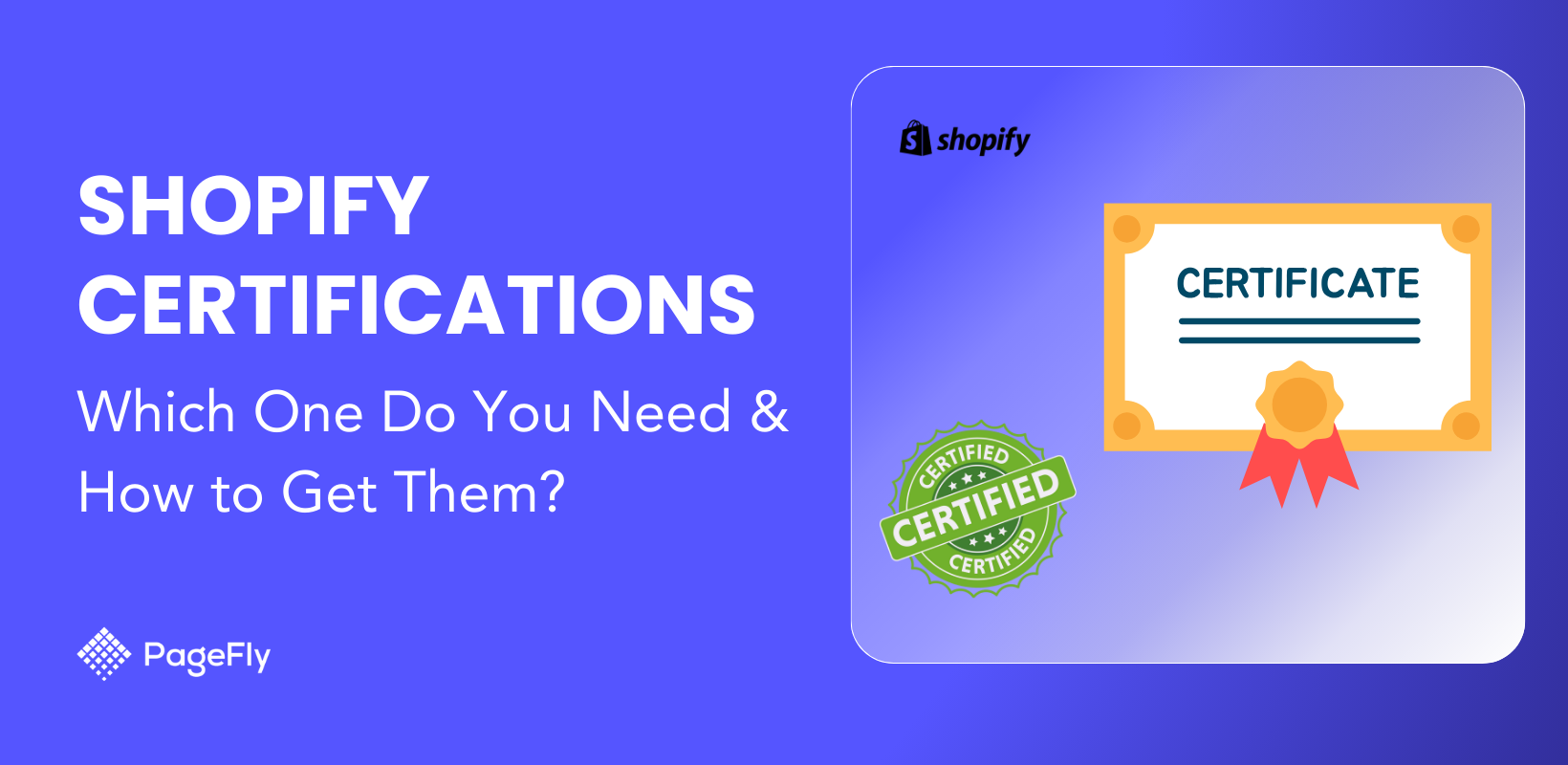Shopify is the world’s leading eCommerce platform, with more than 1.75 million merchants using its software to sell their products online. As a Shopify store owner, you know that an effective eCommerce strategy is key to your business’s success. Search engine optimization (SEO) is an essential part of that e-commerce strategy. It helps drive traffic to your store and conversion rates by making it easier for search engines like Google to find and crawl your website.
This blog post will explain why the Shopify SEO checklist matters for your Shopify store, what kind of SEO you need to focus on as a Shopify retailer, and how you can optimize the performance of your own Shopify store.
Why Does On-page SEO For Shopify Matters?
The eCommerce space has been growing rapidly in recent years, and with it, the number of companies offering eCommerce solutions has also been growing. There are now hundreds of eCommerce platforms available for online retailers to choose from. Choosing the right platform for your business can make a huge difference to your online sales. After all, what good is your product if no one is able to buy it?
Creating an SEO-friendly online store from the start can help your store rank better in the search engine results pages (SERPs) and drive more traffic to your store. When people search for products on Google, they usually don’t go beyond the first results page. The majority of traffic comes from the first page.
So, if your store is not on the first page of Google, you’re missing out on a huge chunk of potential customers. The good news is that you’re not alone. Many eCommerce store owners are also struggling to get their stores on the first page. That’s because many eCommerce store owners have yet to discover the importance of search engine optimization for eCommerce.
Some of the most common challenges faced by eCommerce websites are:
- Poor content: Poor content can lead to a number of problems, including decreased traffic, conversion rates, and search engine rankings. In addition, it can also frustrate customers and cause them to abandon their shopping carts. Content that is too short and duplicative isn’t informative, or is SEO-friendly are all signs of a poor content structure.
- Unoptimized product pages: Not optimizing your product pages can make it difficult for search engines to index your website, leading to lower search engine rankings and less traffic. Without proper product descriptions, reviews, and product images, customers might find it hard to find your store or even trust it.
- Lack of sitemaps: The lack of sitemaps can affect the crawling of your site as well as the indexing. Make sure you have a sitemap.xml in place that is continually evolving and can keep up with your daily updates while providing Google and other search engines with a clear crawl path.
Most reliable eCommerce content management systems (CMSs), like Shopify, include automated sitemaps or plugins for them. But that’s just one aspect of SEO.
It is important to understand SEO from an end-to-end point of view to recognize where your store is lacking and what needs to be done to solve it. Understanding SEO in general but at a deeper level is imperative in this case.
What Is Shopify SEO?
On-page SEO and off-page SEO are the two types of SEO. Your store's optimization level directly affects the on-page SEO. On the other hand, off-page SEO is concerned with how other websites on the Internet refer to and discuss your shop. Since you have control over the majority of the signals, it makes sense to start with on-page SEO. Once you've got it down, you should turn your attention to the off-page elements.
Shopify SEO checklist helps optimize your website (and other online assets) in a way that helps your store rank higher for relevant search terms. It’s about making your store more discoverable online, which will help you drive more organic traffic and increase your sales. Moreover, Shopify enables its merchants with certain automated, built-in SEO features, such as:
- Auto-generated page titles.
- Auto-generated robots.txt files (and sitemap.xml files like we discussed).
- Automatic SSL certificates as Google ranks and crawls secure and authenticated pages with HTTP protocols.
- Auto-generated rel-canonical tags to avoid duplicate content penalties.
- Auto-generated sitemap files.
- Images are hosted on Shopify’s CDN for easy optimization.
21 Important Shopify SEO Checklist Pointers To Help Rank Your Website
Before we begin, remember that the Shopify SEO checklist is not just a one-time thing. Most SEO pointers require to be constantly worked upon with regular monitoring. If you want to make sure your Shopify store is fully optimized for SEO, then you need to keep the following Shopify SEO checklist pointers in mind:
General SEO
Buy a Custom Domain
When you started your online store on Shopify, your URL would have had myshopify.com. You get this free of cost, and it can be used as long as you want. However, it does not appeal to customers as a custom domain does. Custom domains come with a price, and you can purchase them whenever on Shopify itself or through any other third party. You can easily search on Shopify for your desired domain name and check if it is available.

Example of a myshopify.com URL path on Google.
Remember, your URL path is visible to your customers on the SERP. A custom domain is more professional and helps get higher CTRs, leading to improved SEO performance.
Choose a Responsive Design & Theme
Nobody wants to wait around when it comes to visiting a website. A slow page loading time can affect the ranking of your website on Google and can, in turn, affect your sales. A 0-2 seconds loading time is ideal for an eCommerce website. Anything more than that can affect your conversion rate adversely.

A free theme available on Shopify Themes Store.
A fast and responsive page design and theme can help with this. It is natural to make your website pop out and look trendy. But not all themes are SEO-friendly or optimized for good speed and performance. Furthermore, a responsive design makes it suitable for customers to browse through your store on any device of their choice, such as mobile phones, tablets, etc., as Google can easily index your pages for mobile devices as well.
You can understand how fast your Shopify store site is and compare it to other stores through the PageSpeed Insights report or through your Shopify store's dashboard.
Use Shopify SEO Apps & Plugins
To maximize your SEO efforts, take the help of Shopify apps and plugins. Here are some of the best apps that can help in the smooth running of your store, as well as help scale your SEO efforts:
- Yoast SEO - Helps drive more organic traffic and optimizes your website content.
- PageFly - This landing page builder aids in creating landing pages or even separate sections of your store with templates that aid in fast loading speed. You can seamlessly integrate this with other Shopify apps for added effect.
- SEO, Speed and Image Optimizer - It helps in smart SEO optimization, and helps boost store speed, and finds and fixes broken links.
- Schema Plus: Helps in scaling up your technical SEO efforts and enables Google to rank your website.
- Avada SEO Suite: All-in-one tool to automatically optimize site performance, improve visibility, and offer SEO Audit.
Set Up Analytics
You'll be able to see a summary of your e-commerce metrics on your Shopify Analytics dashboard.
To better comprehend website traffic sources and user behavior after they land on your website, you need extra tools. Use Google Analytics and Google Search Console, as both are free for users.

Screenshot taken from Google Analytics
Ensure to do the following once you have set up your Google Analytics and Google Search Console account:
- Send the sitemap generated by Shopify to your Google Search Console account.
- Add the tracking code for Google Analytics to your Shopify store.
These tools help to understand website traffic and marketing effectiveness. Google Analytics can also help you to improve your website and online marketing campaigns and make more informed decisions about where to allocate your marketing resources.
On-Page SEO
Do Keyword Research
Keyword research is an important part of SEO for an online eCommerce website because it allows you to identify keywords most relevant to your products or services. It helps determine how much competition there is for each keyword. By doing so, you can optimize your website for the keywords that are most likely to bring you traffic and sales.

Best keyword research tools according to Semrush, 2022.
A good keyword tool can help you identify high-volume and high-intent keywords. Look for keywords that have good volume and are easier to rank for.
Have a Meta Title & Description for Products
A meta title and description are important for products on eCommerce websites because they help improve the product's visibility in search engine results pages (SERPs).
The meta title is the title of the product page, and the meta description is a short description of the product that appears below the title in the SERP. Search engines use both the meta title and meta description to generate the SERP snippet, which is the text that appears in the search results.

This is important because they allow eCommerce websites to control how their products appear in the SERPs. It can improve the click-through rate (CTR) of the product listing and, ultimately, increase sales.
Optimize URLs
Optimizing URLs can help search engines understand what the page is about, which can lead to better rankings. Additionally, it can help improve click-through rates from search engine results pages, as users are more likely to click on a result with a relevant and descriptive URL. Finally, optimizing URLs can also make it easier for users to share links to your products and pages, which can help to increase traffic. You can easily edit URLs on your Shopify CMS.
Here’s what you can do to optimize URLs:
- Remember to include relevant keywords in your URL.
- Keep the URLs short.
- Avoid using irrelevant or unnecessary words.
Use a Custom URL Handle for Each Product & Page
The URL slug (the end part of the URL, also known as the URL handle) denotes a particular product or page. Using a custom URL handle for each product and page helps to ensure that each URL is unique and easy to remember. This can be especially helpful when linking to products and other websites or social media pages. Don’t use any prepositions or question marks in your slug. You can edit the slug of each product on your store by clicking on “Edit website SEO”.
If you are changing the slug of an already indexed page, remember to redirect the old URL to the new one, so your customers don’t end up on an error page. You can easily do this by checking the “Create a URL redirect” box while updating the slug.
Optimize URLs for Each Category & Product Page
Category and product page URLs should be short and to the point, with no extraneous characters or content. For instance, if you have a watch category for men, your URL can be https://example.com/mens-watches.
Make sure the user can determine the topic of the category from the URL itself by keeping it simple and concise.
Look Out for Internal Linking Opportunities
Increase the internal authority of your major product or category pages by linking to them from the site-wide menu. Additionally, it helps Google understand the sites' hierarchy. The fact that a page is linked to from the site navigation technically indicates to Google that it is essential because it is connected to every page on the website. It also helps to increase your website's authority and improve your search engine rankings.
Have a Blog Page
A blog page is important for an eCommerce website because it allows the website to have fresh content that is relevant to the products being sold. This fresh content can attract new visitors to the site, which can lead to more sales. In addition, an SEO-optimized blog can build customer loyalty by providing valuable information that helps customers make better buying decisions.
Structure Your Website Content & Headings Properly
If you want your eCommerce website to be successful, it is important to structure your content and headings properly. This will ensure that your website is easy to navigate and that users can find the information they are looking for quickly and easily.
A well-structured website will also be more likely to rank higher in search engines, as they can easily index your website and its content. Finally, a well-structured website will be more user-friendly, encouraging users to stay on your site longer and make more purchases.
Here’s what you can do to structure your content and headings:
- Use H1s for product names. Remember to use only one H1 on each product page and ensure to have H1s on all pages.
- Use headings in their hierarchical order, H1 > H2 > H3 > H4 and so on.
Using the headings in the right way can help you align content most effectively as well.
Off-Page SEO
Build Links To Your Website Actively
Building links help improve the visibility of eCommerce websites in search engine results pages (SERPs). This can lead to increased traffic and sales. Links can help build relationships with other websites and improve the chances that they will link back to the eCommerce site. This can also lead to increased traffic and sales from referral traffic.
Finally, external links can help improve the overall authority of an eCommerce website, leading to higher search engine rankings and increased traffic and sales. Remember to use links from relevant websites with quality content that aligns with the anchors you are using on your website. You can also hire the SEO expertise you need to help rank your website on search engines from Shopify experts.
Explore PR Opportunities
Consumers frequently use word-of-mouth recommendations to guide their emotional judgments.

According to studies, including PR in a wider digital marketing strategy regularly can boost brand profits by 20%. To increase brand recognition and increase traffic, and sales, you can utilize public relations to publish articles and prominent customer reviews. You can even sign up on HARO (Help-A-Reporter-Out), where journalists and publishers seek expert insights on certain products and subject matters.
Technical SEO for Shopify
Focus On Website Navigation
A good navigational menu helps visitors find what they are looking for quickly and easily. It reduces the number of steps needed to complete a purchase.
Moreover, it can help to increase the average order value by making it easy for visitors to add items to their carts. Good site navigation can also help to improve the overall user experience on a website, which can lead to more repeat visitors and customers. Here are some tips to keep in mind for an SEO-friendly navigation menu:
- Organize your products into categories or collections.
- Maintain the navigation menu across all pages.
- Provide easy access to a contact page or form for customers to connect with you in case of any queries.
Add Products Schema
A product schema allows you to add specific content on your products, such as product attributes on product listings, that you want to appear on the SERP as rich results. You can add this structured data to your Shopify store by editing your website’s code. You can also add schema manually by going to Themes > Action > Edit code. The product schemas can be anything, including:
- Product color.
- Product category.
- Product rating.
- Material, etc.
Take Action: Shopify Marketing and Conversion
Perform A Crawl On Your Store’s Site
Running a crawl on your website can highlight any crawl blocks, disallowed URLs, any 404 Errors and more. It helps understand how Google and other search engines navigate through your website. You can use any tool for performing a crawl on your Shopify store, including Google Search Console.
Update Product Reviews
Product reviews provide valuable product feedback from actual customers, help improve the products, and make the website more trustworthy. Updating product reviews regularly can help encourage customers to make purchases on the website by providing social proof.
Link Category Pages To Canonical Pages
Duplicate content is one of the major technical SEO problems that eCommerce website owners face. Collection pages on many Shopify pages link to identical or duplicate product pages by default.
Here's how you can check if you have a duplicate page. Go to your product page and check if /collections/ & /products/ is present in the URL. Canonical tags on these copycat pages frequently make reference to the original rankings page.
You can fix this by:
- Go to Themes > Action > Edit code and
- Click on product-grid-item.liquid
- Adjust the code to the following: <a href=”{{ product.url }}” class=”product-grid-item”>
You can also visit Shopify Community to learn more about fixing duplicate content issues.
Audit Your Website
As mentioned at the beginning of the article, SEO is a continuous process. With time, your website will have more or fewer pages, more products, and backlinks. So performing an audit on a regular basis can help you understand what aspects of your store are attracting more customers, which pages are performing better and accruing traffic, and what is not working out.
You can use these insights to resolve the issues and work on improving the overall performance of your website.
Fix Broken Links
As your business grows, you’ll have more products added. Based on the demand, many products might be out of stock for a certain period or permanently. This will lead to deleting or unpublishing those pages from your Shopify store. If this particular page was linked to any other active page on your website, it becomes a “broken link” now.
An excessive number of broken links is a red flag for your website, and Google tends not to rank these websites as it gives the impression that the website is not active. Running a site crawler can help you identify these broken links and fix them to avoid affecting your overall SERP rankings. Popular SEO marketing tools such as Ahrefs and Semrush comes with certain free SEO tools such as broken link checker that you can use to spot the inbound broken links and fix them.
5 Shopify SEO Best Practices To Keep In Mind
As we know, Shopify is a widely used eCommerce platform that has transformed online shopping. In order to make your website successful using these Shopify SEO checklist pointers, it is important to follow some best practices.
So, here are 5 Shopify SEO strategies and best practices that can help you optimize your website and improve your ranking in search engines.
Use Keywords in Your Meta Tags
When you are creating your Shopify website, make sure to use keywords in your meta tags. Meta tags are used to describe your website to search engines. If you want your website to be found by potential customers, you need to include relevant keywords in your meta tags.
Optimize Your Product Pages
One of the most important pages on your Shopify website is your product page. This is where potential customers will learn more about your products. Make sure to include relevant keywords in your product page title and description. You should also include high-quality product images and videos.
For example, let’s say the keyword is hoodie. In this image, you can see how Gymshark’s product pages are optimized using the keyword - hoodie.

Use Alt Tags for Your Images
Another important element of your Shopify website is your images. Search engines cannot read images, but they can read the text that is associated with them. This text is called “alt text”. When adding images to your website, ensure to include relevant keywords in the alt text.
Publish High-Quality Content
One of the best things you can do to improve your website’s SEO is to publish high-quality content. Content is what helps search engines understand what your website is about, and it’s also what helps people decide whether your website is worth visiting. Make sure your content is well-written, informative, and relevant to your business and products.
Monitor & Adjust Your Strategy
SEO is an ongoing process, and you need to continuously monitor your website’s SEO to see how you’re doing and to make adjustments to your strategy as needed. There are many tools you can use to track your website’s SEO, including Google Analytics, Google Search Console, and Moz.

Following these best practices can help you optimize your Shopify website and improve your ranking in search engines. You can also download the Shopify SEO checklist from here for yourself and keep a track of your progress.

Conclusion
Shopify's SEO checklist is a great guide for those looking to improve their website's ranking in search engines. These tips are easy to follow and provide a good overview of what needs to be done to improve your website's SEO. Following the checklist will help you improve your website's ranking and visibility in search engines and ultimately lead to more traffic and sales.







![Shopify Marketing: 15+ Strategies To 3x Your Sales [+Shopify Tools]](http://pagefly.io/cdn/shop/articles/shopify_marketing_a0d510d6-f36d-455a-8fc0-b529f56bea42.png?v=1740621003&width=1640)










